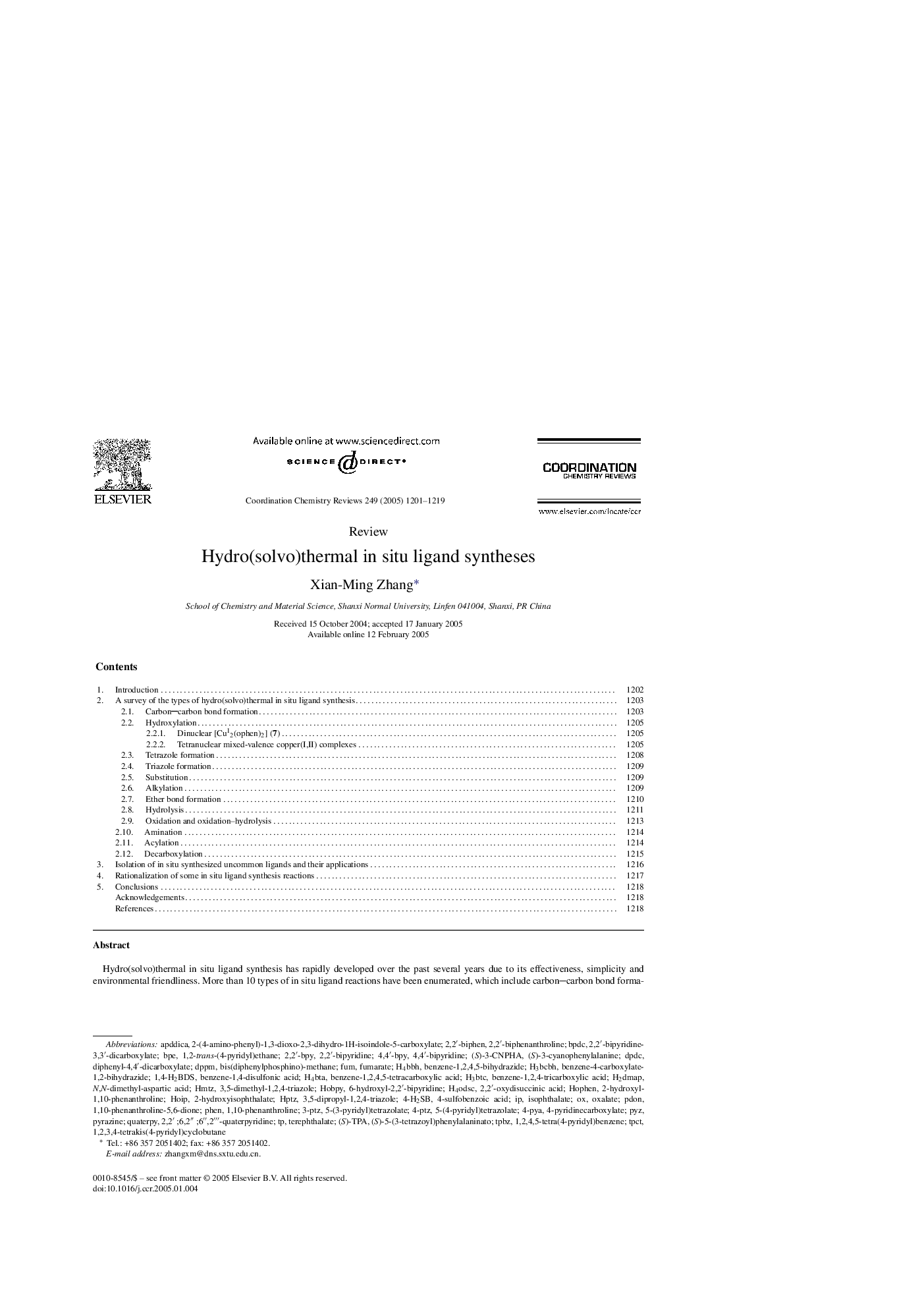| Article ID | Journal | Published Year | Pages | File Type |
|---|---|---|---|---|
| 9763714 | Coordination Chemistry Reviews | 2005 | 19 Pages |
Abstract
Hydro(solvo)thermal in situ ligand synthesis has rapidly developed over the past several years due to its effectiveness, simplicity and environmental friendliness. More than 10 types of in situ ligand reactions have been enumerated, which include carboncarbon bond formation, hydroxylation, tetrazole formation, triazole formation, substitution, alkylation, ether bond formation, hydrolysis, oxidation-hydrolysis, acylation, amination and decarboxylation. Hydrothermal in situ ligand synthesis has become a powerful approach in the crystal engineering of coordination complexes and in organic synthesis, and is becoming an alternative approach in the isolation of organic isomers. In the crystal engineering of coordination complexes, in situ ligand synthesis is suitable to prepare novel coordination complexes from metal ions and organic precursors and most of these complexes are not accessible from a direct reaction of metal ions and ligands. In organic synthesis, hydrothermal in situ ligand syntheses have become very useful pathways to organic ligands, which are difficult to obtain by routine synthetic methods. In isolating organic isomers, in situ ligand synthesis is becoming an alternative route because in some special cases, only one of the several isomers of a ligand is found in crystalline complexes involving in situ ligand reactions.
Keywords
Related Topics
Physical Sciences and Engineering
Chemistry
Inorganic Chemistry
Authors
Xian-Ming Zhang,
